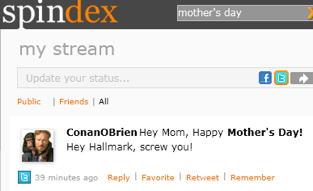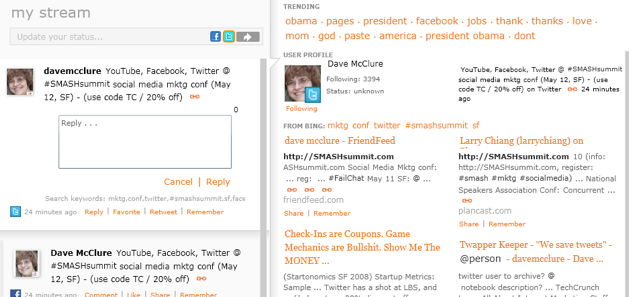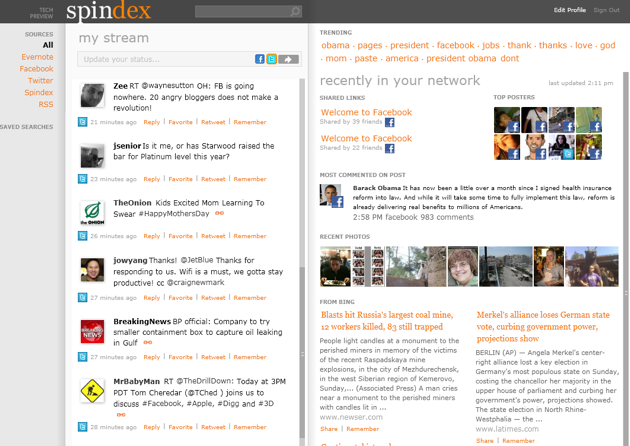 Earlier this week during a keynote presentation at Web 2.0, Lili Cheng, head of Microsoft’s Future Social Experiences Labs (FUSE) group, unveiled their latest research project: Spindex, a ‘social personal index’ for your web content. The site is in a private beta, but some beta invites were handed out at the conference, and I’ve just *cough* taken it for a spin.
Earlier this week during a keynote presentation at Web 2.0, Lili Cheng, head of Microsoft’s Future Social Experiences Labs (FUSE) group, unveiled their latest research project: Spindex, a ‘social personal index’ for your web content. The site is in a private beta, but some beta invites were handed out at the conference, and I’ve just *cough* taken it for a spin.
My initial impressions are below.
When you first fire up Spindex, the site asks you to link your Twitter, Facebook, and Evernote accounts, as well as any RSS feeds you follow. After you do that you’re kicked into the main site, which is broken into three sections: a left sidebar for navigation, and two columns with content. In the navigation sidebar you select which source you want to browse through (based on the accounts you linked earlier), and there’s an option to see a combined stream of the data inputs called ‘All’. At the very top of the page is a search box that lets you search all of your friends’ recent updates (it’s like Twitter search, but restricted to just your friends).
In the middle column is “My Stream” — depending on what filter you’ve selected in the Sources panel, you’ll see a stream of the most recent updates from your Twitter, Facebook and RSS feeds in reverse chronological order. Beneath each of these posts are the basic sharing options you’d expect from each service: you can Comment on, Like, or Share a Facebook item, and can Reply, Favorite, and Retweet Twitter posts. The interface for this is well done — hitting Reply or Comment causes a text box to appear in-line, as opposed to using popup windows.
The far right column is where Spindex’s special sauce lies (though it’s clearly got a ways to go). When you first log into Spindex, this column gives you a quick overview of what your friends have been talking about and sharing. There’s a section for commonly shared links, as well as a “Most commented on post”. Below that are a handful of thumbnails showcasing the images your friends have been sharing recently. And at the very top is a list of trending terms (these are based on items your friends have been sharing, as opposed to the entire Facebook or Twitter communities). Below this social content are a bunch of popular news stories, as determined by Bing.
As you interact with items in your stream (the middle column), this far right column changes. Hit ‘reply’ to a tweet about Mother’s Day, and the right column will show Bing search results that have the keywords “mothers” and “day”. The right column also shows a few recent tweets or status updates from the person you’re replying to.
The site is still rife with quirks, which are to be expected given that it’s a tech preview. I noticed that if I refreshed my Facebook feed multiple times, I’d often wind up with a different “Most commented” post, and sometimes I wouldn’t see one at all. After linking my Twitter account with Spindex, the only way I could get the service to import new tweets was to log out and back in. And after staying logged in for around twenty minutes, I found that ‘My Stream’ no longer had any results available from Facebook or Twitter.
All of that said, Spindex has potential, provided Microsoft FUSE can fine-tune their algorithms to help give an accurate overview of your Facebook, Twitter, and RSS feeds. Of course, it’s still a research project, so it may be quite a while (if ever) before it’s released to the public. In the mean time, you might want to check out TC50 finalist Threadsy, which also presents your social streams in a multi-column format.

